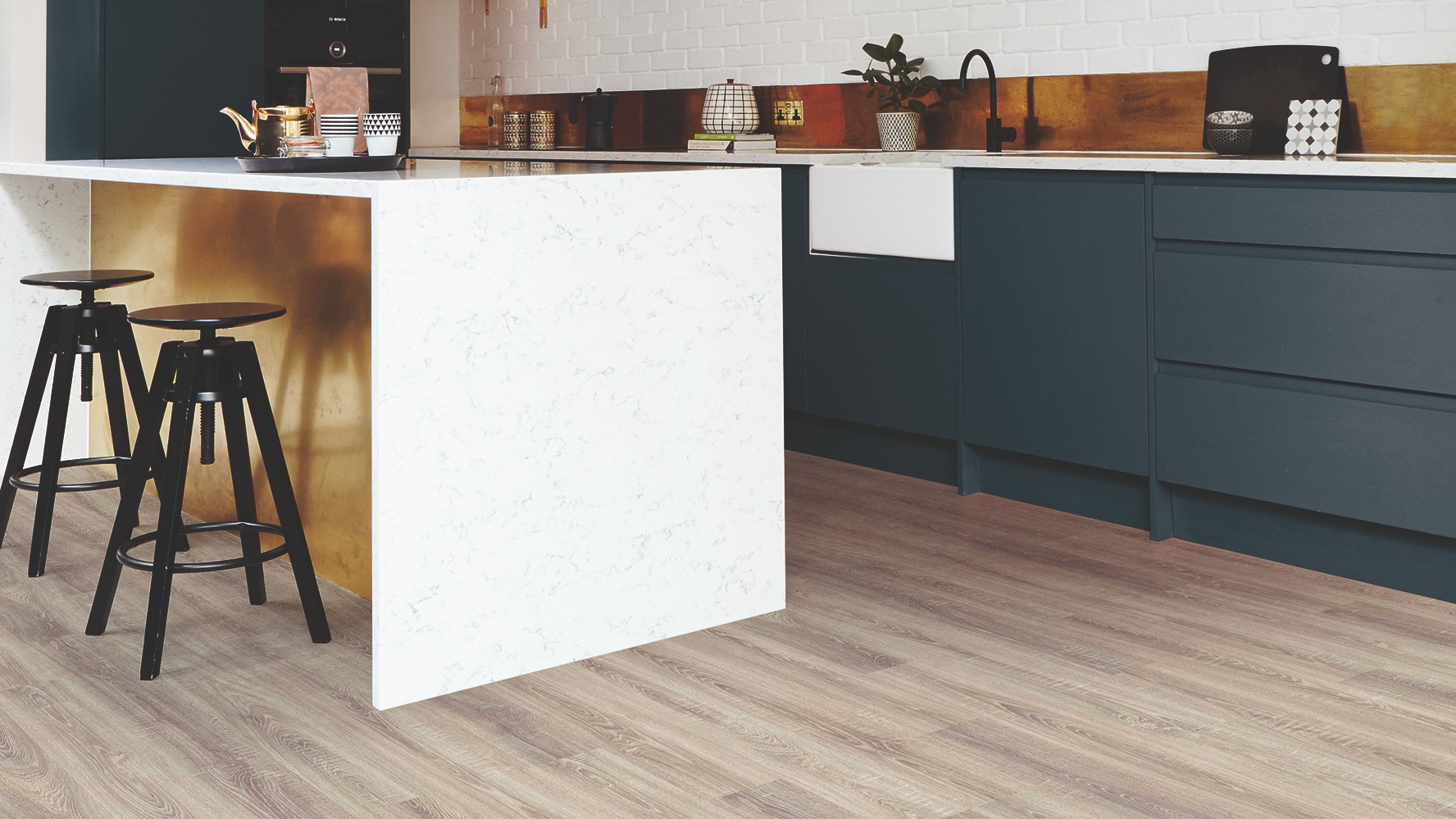Imagine this: you’re staring at your laminate flooring, tired of its outdated look. You envision a fresh, new color that would revitalize your space. A wave of excitement washes over you as you consider painting it yourself, but then a nagging question creeps in: “Can you really sand and paint laminate flooring?” The answer, as with many DIY projects, is not as straightforward as it seems. In this article, we’ll delve into the complexities of sanding and painting laminate floors, equipping you with the knowledge to make an informed decision for your home.

Image: mromavolley.com
Laminate flooring, with its durability and affordability, has become a popular choice for many homeowners. But while it’s easy to install and maintain, updating its look can be tricky. The question of whether or not you can sand and paint laminate flooring is one that sparks debate within the DIY community. Let’s explore the reasons behind this debate, the potential pitfalls, and the best alternative solutions.
Why Sanding and Painting Laminate Flooring is a Difficult Task
The core issue with attempting to sand and paint laminate flooring lies in its composition. It’s not a solid piece of wood like hardwood flooring, but rather a multi-layered composite material. The top layer, often a printed image of wood, tile, or stone, is protected by a thin, clear wear layer that’s resistant to scratches and stains. This wear layer is the primary obstacle to any successful sanding and painting endeavor. Here’s a breakdown of why sanding and painting laminate flooring is discouraged:
-
The Wear Layer is Extremely Thin: The protective wear layer is designed to be durable yet thin. Any attempt at sanding will quickly go through the wear layer, exposing the underlying layers of the laminate flooring. This might cause irreparable damage, making the flooring uneven or compromising its structural integrity.
-
Uneven Surface: Once you’ve removed the wear layer, the underlying layers are frequently composed of a compacted fiberboard or particleboard. This material tends to be porous and less dense, making it difficult to achieve a smooth, even surface for painting. Sanding can also create gaps and unevenness, ultimately affecting the final appearance.
-
Adhesion Issues: Successfully painting laminate flooring requires the paint to adhere well to the surface. However, the smooth, non-porous nature of laminate flooring can hinder the paint’s ability to bond effectively. Even with primer, the paint might chip or peel off over time, leading to frustration and disappointing results.
-
Potential for VOC Release: While some laminate flooring manufacturers utilize low-VOC materials, others may contain formaldehyde and other volatile organic compounds (VOCs). Sanding these laminates might release these harmful substances into the air, posing a health risk, particularly for those with sensitivities.
-
Warranty Voiding: Most laminate flooring manufacturers explicitly state in their warranties that sanding and painting the flooring voids the warranty. This means that any damage or defects arising from sanding or painting would not be covered by the manufacturer.
Alternative Solutions to Update Laminate Flooring
While the allure of sanding and painting laminate flooring may seem appealing, there are several alternative ways to refresh its look without compromising its structure or warranty. Here are some effective solutions:
-
Refinishing with a Special Laminate Floor Coating: Specialty coatings designed specifically for laminate flooring can create a durable, protective layer that mimics the look of stained wood or other finishes. These coatings are typically applied with a roller or brush and come in various colors and textures.
-
Stencils and Decals: Adding a touch of personality without sanding is achievable through the use of stencils and decals. These options enable you to create unique patterns and designs on your laminate flooring’s surface, instantly transforming its appearance.
-
Area Rugs: Covering certain areas with strategically chosen area rugs is an easy and affordable way to enhance the visual appeal of your laminate flooring. Opt for rugs with vibrant colors and textures to create a focal point or to match your personal style.
-
Adding Furniture and Accessories: The right furniture and accessories can play a significant role in creating a cohesive look for your entire space, even with laminate flooring. Consider using furniture with bold colors, patterns, or textures to complement the flooring and draw attention away from its plainness.
-
Replacing the Laminate Flooring: If you’re determined to achieve a completely fresh look, replacing the laminate flooring altogether is a viable option. This approach provides the most transformative change, allowing you to choose a new style, color, and texture that perfectly aligns with your vision for the space.
Choosing the Best Solution
Deciding on the best approach to update your laminate flooring boils down to your desired outcome, budget, and comfort level with DIY projects. If your primary goal is to revitalize the look with minimal effort and cost, refinishing with a laminate floor coating or utilizing area rugs may be the most suitable options.
For those seeking a more significant transformation, replacing the laminate flooring, even though it’s more involved and requires a greater investment, might be the right choice. Always remember to carefully consider the pros and cons of each option, read manufacturer instructions, and prioritize safety and health during any DIY project.

Image: www.bestfloorcoatingsaz.com
Can You Sand And Paint Laminate Flooring
Conclusion
While the desire to sand and paint laminate flooring for a fresh look is understandable, the potential risks and challenges associated with this approach often outweigh its benefits. Instead of compromising the flooring’s integrity or voiding its warranty, explore the diverse range of alternative solutions available. Whether you choose to refinish, add rugs, or replace the flooring altogether, there’s a way to achieve your desired aesthetic without sacrificing durability or your budget. Remember, your home is your sanctuary, and it deserves a space that reflects your personal style and provides years of comfort and enjoyment.






